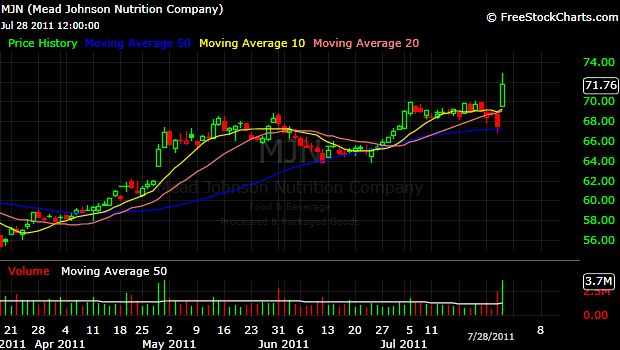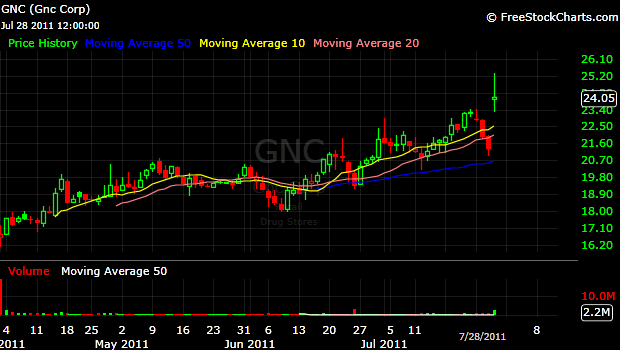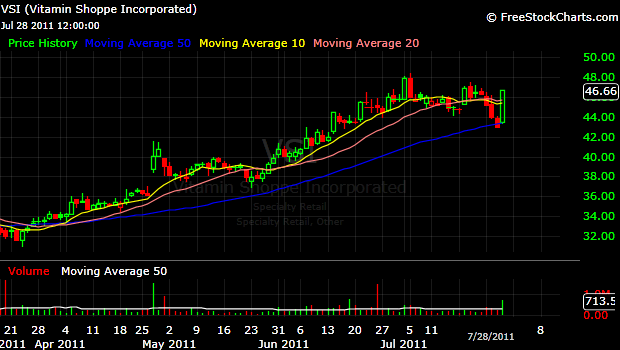I know, “the whole world is bankrupt”, the consumer is not spending, manufacturing growth is slowing down, China is cooking the books, gold is at all-time high, the government wants to raise taxes when the economy is still struggling to recover and after the debt ceiling farce the U.S. reputation is not what it used to be. What can you do about the above stated issues? Absolutely nothing. Leave the macro issues to journalists and reporters, who are in a constant search for the next big disaster to generate traffic and focus on what you can actually control – the stocks you trade, risk management and your attitude.
I have long stopped to worry about macro issues. They don’t matter for my market approach. I focus on stocks that are still in an uptrend and on setups that look promising. Granted, I agree with the concept that during severe sell offs, correlation goes to 1 and most equities suffer. This impacts my position sizing and holding period.
I always have a watch list of ready to go setups, consisting of some St50 members + other stocks that meet my criteria for shorter term trades. Once a signal is given (price level exceeded), I buy. When I am wrong, I am stopped and I exit for a loss. During market sell offs, a smaller number of signals are given, I trade less frequently and my holding period is substantially shortened. When multiple signals are simultaneously produced, this is a good indicator of improving risk appetite and healthy market, which means that most breakouts will follow through and higher beta stocks will outperform.
Even during the steepest market selloffs, there are stocks that hold up well and advance, meaning the market provides good trading opportunities on the long side almost every week. If it happens that there are no enticing setups and you feel that you don’t have an edge in the current market environment, just turn your computer off and go on vacation. The market will be still here when you come back. You don’t have to involved all the time.
Trading/Investing is all about probabilities, meaning that anything is possible and we need to be open-minded for any market scenario. If we are about to experience another severe sell off just like in the fall of 2008, remember the words of Shelby Davis, which Michael Bigger quotes in chapter 8 of THE StockTwits EDGE:
“Bear markets make people a lot of money; they just don’t know it at the time.”
The great recession of 2008-2009 put a lot of companies out of business, but the stocks of many of those that survived went up 10-fold+ in the next 2 years. The little detail is that to enjoy this ride, you had to preserve your capital.
Double dip? Bring it on.


